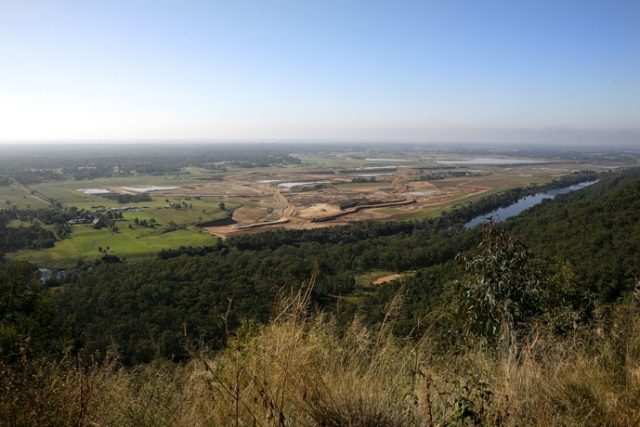The future of Penrith Lakes is again being questioned with plans to raise the Warragamba Dam wall coupled with the dumping of over two million tonnes of soil at the site creating what experts say is a “perfect recipe” for urban development.
While sceptics have raised concerns over both the cost and environmental consequences of raising the wall, Nepean Hawkesbury flood study researcher, Professor Jamie Pittock said he believes the State Government is deliberately ignoring the impacts with urban growth in mind.
This is despite consistent denials from the Government and Penrith MP Stuart Ayres that residential development is possible at Penrith Lakes.
To date over two million tonnes of WestConnex construction soil has been dumped on the site, which Professor Pittock said can only further flood proof the site for development purposes.
“In my view it’s a strategic decision of the State Government for more urban development in western Sydney as opposed to reducing flood damage to the existing urban development areas so it’s a very strategic choice,” he said.
“The information that I’ve seen of property developers buying large chunks of the undeveloped land of western Sydney and video footage of Stuart Ayres talking about his desire to see a lot more urban development in those sorts of places does make me think that this is the agenda.”
Penrith Lakes Development Corporation, established in 1979 used the sand and gravel deposited on the floodplain to make concrete for construction projects all over Sydney. This extraction ceased back in 2015.
Westconnex’s Construction Spoil Management Plan states soil dumping at Penrith Lakes is for the purpose of “filling for the rehabilitation of quarry”.
“Some of this surplus material has been transported for reuse on development projects in western Sydney including Penrith Lakes, as per its approved Development Application,” a Westconnex spokesperson said.
“This initiative is maximising the reuse of clean and usable spoil generated during construction and forms part of the project’s environmental sustainability measures.”
Professor Pittock said regardless of the quarry, this fill will heighten the land, thus reducing the flood risk and displacing it to other areas.
Penrith MP Stuart Ayres continues to deny the State Government plans to develop the land for residential use.
“There’s no residential zoning that exists at the Penrith Lakes, there isn’t an opportunity to do residential development there,” he said.
“I think there can be non-residential solutions but the Hawkesbury Nepean flood strategy makes it very clear that large scale residential options are just not a viable option.”
Penrith Lakes sits in the 1 in 100 chance per year flood level. Currently new homes in planned precincts in the Valley are not allowed in high risk flood areas below the 1 in 100 category.
Although raising the wall on top of heightening the land would significantly reduce this risk, InfrastructureNSW states Penrith Lakes will remain subject to these flood-related development controls, based on the 1 in 100 chance level.

A graduate of Western Sydney University, Nicola Barton is a news journalist with the Western Weekender, primarily covering crime and politics.


